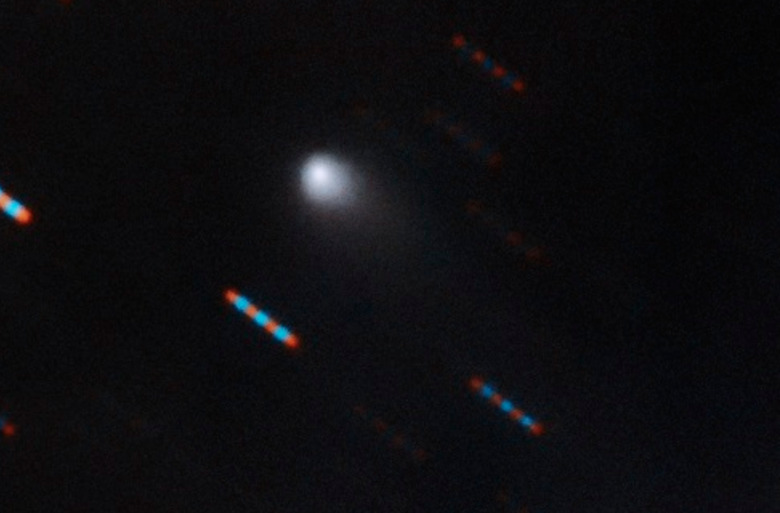Newly-Discovered Interstellar Object Is Spewing Cyanide Gas
Astronomers spotted an interstellar object passing through our solar system last month. It was only the second time scientists have ever detected such an object, and after some intense investigation, the object — now believed to be a comet or comet-like body — was documented and named for the amateur astronomer who first spotted it.
The comet, called 2I/Borisov, was spotted relatively early in its trip through our system, giving scientists plenty of time to observe it. The first round of studies is already returning some interesting findings, including the fact that the object is dumping cyanogen gas (gas that is at least partly made up of cyanide) as it speeds through our home system.
A new paper published in Astrophysical Journal Letters reveals that interesting finding, which was made thanks to data gathered by an international team of scientists using the William Herschel Telescope. But as seemingly frightening as this discovery seems on the surface, there's very little to worry about for us here on Earth.
"Interstellar objects are samples of materials from other planetary systems, delivered to our doorstep—or at least to our own solar system," Professor Alan Fitzsimmons, who led the research, told Universe Today. "The physical nature gives us clues as to how other planetary systems evolve, and the types of small bodies that may exist there. Measuring their composition allows us to compare what we find with decades of studies of comets and asteroids orbiting the sun."
Fitzsimmons says that while this particular comet appears a bit more "gassy" than the kinds of comets we typically see in our system, the fact that it contains cyanide isn't particularly shocking.
2I/Borisov's trajectory has already been plotted and it doesn't seem that the object will come anywhere near Earth, or even pass through Earth's orbital path around the Sun, so there's virtually zero chance any of the comet material will find its way to our planet.
Scientists will continue to observe the object as it gradually passes through our system, and the comet should remain visible for many months to come. You can expect to hear a lot more about it as various research efforts get underway.
